A metal detector is a device capable of detecting metal objects hidden from view in soil, water, clothing, food and building structures. These are all examples of their professional use. There are also many treasure hunters, and in this case you cannot do without a metal detector. The question remains, which one is better to buy? A huge number of firms and companies produce models for various purposes and price ranges: simple and inexpensive for beginners, multifunctional and expensive for professionals. The editorial staff of the site "bestx.htgetrid.com/en/" offers an overview of "The Best Metal Detectors for Beginners and Professionals in 2020", based on customer reviews and expert opinion.
Content
- 1 What is a metal detector for?
- 2 What are the metal detectors
- 3 How a metal detector works
- 4 Functionality of the metal detector
- 5 How to choose a metal detector
- 6 What else to pay attention to
- 7 Top manufacturers
- 8 Where to buy a metal detector
- 9 How to make a metal detector with your own hands
- 10 Rating of quality metal detectors
- 10.1 10.Bounty Hunter Tracker IV dirt
- 10.2 9.Minelab Go-Find 20
- 10.3 8.Garrett ACE 150
- 10.4 7.Fisher F11 '' DD ground
- 10.5 6.Bounty Hunter Land Ranger Pro
- 10.6 5.Deteknix Quest Q40
- 10.7 4.Fisher F 75 ground
- 10.8 3.Teknetics T2 LTD 11''DD + 5''DD
- 10.9 2. XP Metal Detector Deus
- 10.10 1. Minelab Excalibur II underwater
What is a metal detector for?
With the help of metal detectors, you can solve a lot of useful and complex tasks.
Builders determine the location of underground communications, hidden electrical wiring and metal structures in concrete and brick walls. The operation is necessary in order not to damage the cables and pipelines.
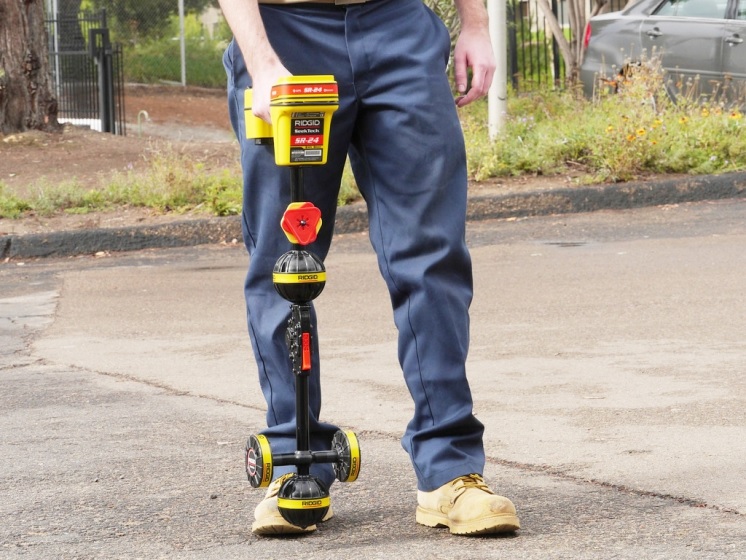
The guards and the police reveal the presence of weapons hidden in the clothes of intruders, at train stations and airports, in crowded places.
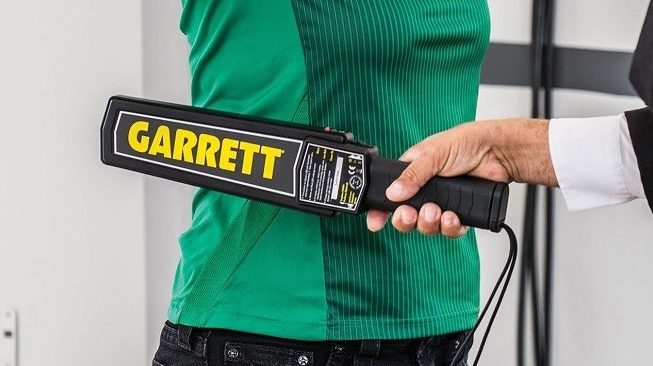
Army sappers discover mines and unexploded ordnance. They were the first to appreciate the usefulness of this invention and called it a mine detector.
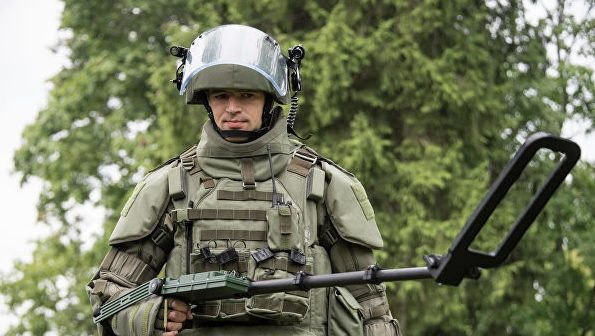
Volunteers of search parties find the remains of soldiers who died on the battlefields of the last war.
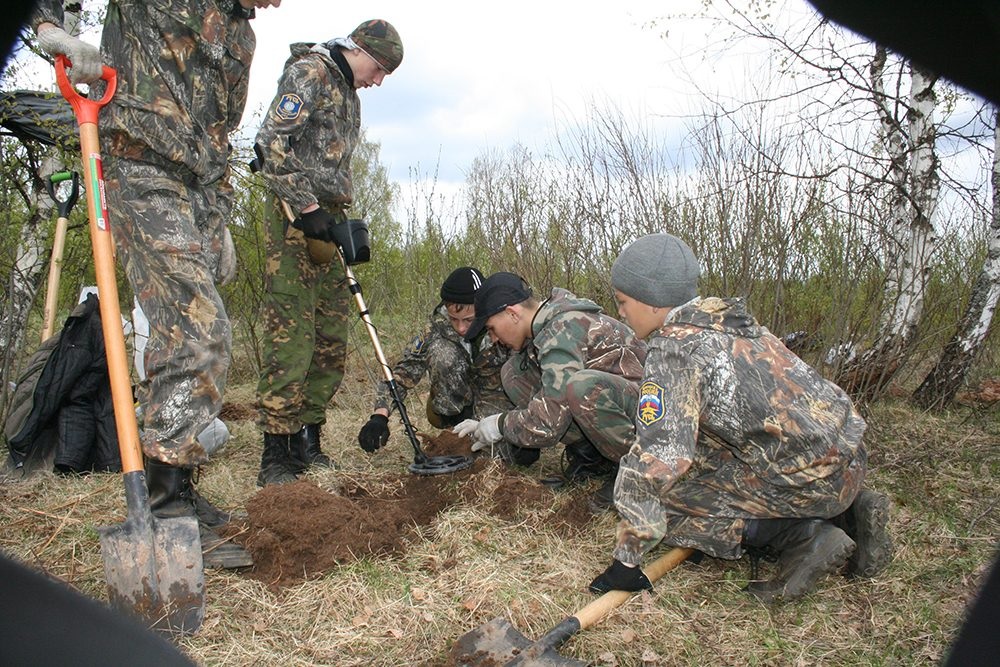
Treasure hunters use these devices to find ancient coins and other artifacts of historical value.

Interesting! In 1881, the Scotsman Alexander Bell, the inventor of the telephone, creates the first working metal detector. In July of the same year, lawyer Charles Guiteau shoots the twentieth president of the United States, John Garfield, in the back. The doctors cannot find the bullet. The wound festered. Bell offers to use his device, but it doesn't work as the patient lies on a metal bed. Doctors categorically refuse to move the patient from this bed. Garfield dies.
What are the metal detectors
There are several types of devices:
- Ground. Used to search in fields, forests, in general on land.
- Underwater. With them, you can dive into the water to significant depths in search of artifacts.
- Deep. These devices "see" massive objects at a depth of up to 2 meters, show leaks in the ground, buried foundations, but will not react to small coins on the surface.
- Military (mine detectors).
- Manual inspection, for security services.
- Arched or framed, at airports and train stations.
We are interested in ground and deep metal detectors. We do not consider arched ones, since they are stationary and are not used when searching for underground objects. We also skip the military and security checkpoints, for reasons that will be discussed below.
According to the degree of preparation of the user, the devices can be divided into the following types:
- Detectors for beginners. Inexpensive devices with limited functions.
- For advanced users. They differ from products for beginners in good characteristics.
- For professionals. Expensive devices with a wide range of functionality, allowing effective searches for metals in various conditions, using a variety of modes, programs and settings.
How a metal detector works
The simplest device includes:
- a rod with an armrest and a handle;
- control unit with display, batteries and headphone jack;
- inductor.
Metal objects are electrically conductive. The soil in which they hide is considered a neutral environment. The electromagnetic field of the switched on coil penetrates into the neutral environment and contributes to the formation of the electromagnetic field of a metal object hidden under the ground. This induced field creates a disturbance that is reflected on the display and responded with a signal from the speaker or headphones.

Functionality of the metal detector
Discriminator
Metals have different electrical conductivity. By analyzing this parameter, the device determines what kind of metal is stored under the layer of the earth. This feature of a metal detector is called discrimination. The detector, equipped with a discriminator, shows the dimensions and material of the object with high accuracy. It can be configured to react to gold, silver, bronze, and copper items while ignoring beer cans. The user does not have to dig into the ground with a shovel in vain.
Interesting! Mine detectors, arch detectors and manual security detectors do not need discrimination, since their purpose is to search for any metal. They are simpler than ground ones, have a narrow specialization and are not considered in this review.
Working frequency
The coil sends a certain number of waves per second into the ground. The frequency is measured in hertz (Hz) and kilohertz (kHz). At low frequencies from 3 to 5 kHz, the soil has a minimal effect on the readings of the device. Such devices are used for searches under a large layer of earth. But such detectors cannot detect small pieces of iron.
Detectors operating at an average frequency of 5 to 14 kHz are versatile, suitable for archaeologists, treasure hunters and prospectors.
High frequency devices (from 14 to 20 kHz) are very sensitive. Suitable for small diving searches for small coins and other small items.
Ultra-high frequencies, over 20 kHz, are used to find very small objects such as small gold nuggets.
Ground balance
This function allows you to determine the structure and contamination of the soil, after which you can more accurately tune to the desired frequency so that mineralized inclusions and other debris do not distort the signal. Ground balance detectors are versatile and used by professionals.
Detection method
Each metal detector designed to search for objects of a certain type has its own signal generation and recognition circuit, i.e. its own metal detection method. There are several of them:
- VLF, from the English abbreviation Very Low Frequency. Low frequency devices are capable of detecting large metal objects at great depths.
- VFLEX. Development of the VLF method. A Minelab product.
- RF. Object detection using high frequency signals. In circuits working according to this method, two coils are used - receiving and transmitting. Used in deep metal detectors.
- PI. Pulse induction method.
- ZVT. Literally - zero voltage transmission. The latest development from Minelab. Designed for gold prospecting.
- FBS. Multi-frequency search method.The device probes the ground at low, medium and high frequencies simultaneously. Having processed the site once, the user will receive complete information about large and small objects hidden underground. Developed by Minelab.
Coil types
There are many of them. They differ in shape, size and design, on which the detection depth and swath width of the investigated area depend.
- Concentric

Used in VFL and VLFEX schemes. They consist of two windings, receiving and transmitting, located one in the other.
- Mono
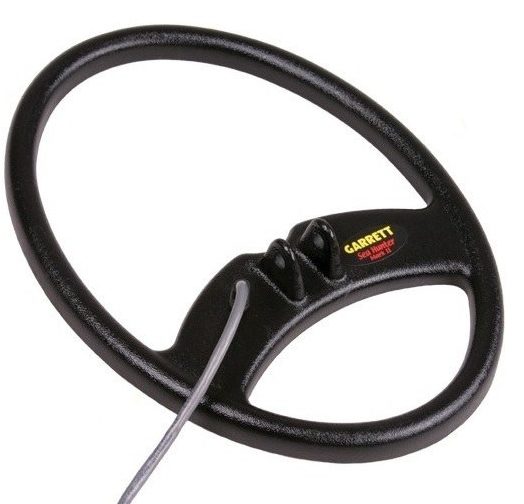
The simplest view. Has no more than one winding. Used in PI or RF devices.
- Double-D

Two windings resembling two D letters with a common "back", forming a geometric figure similar to a circle or an ellipse. They work as concentric, but differ from them in a wider working band.
- Super-D
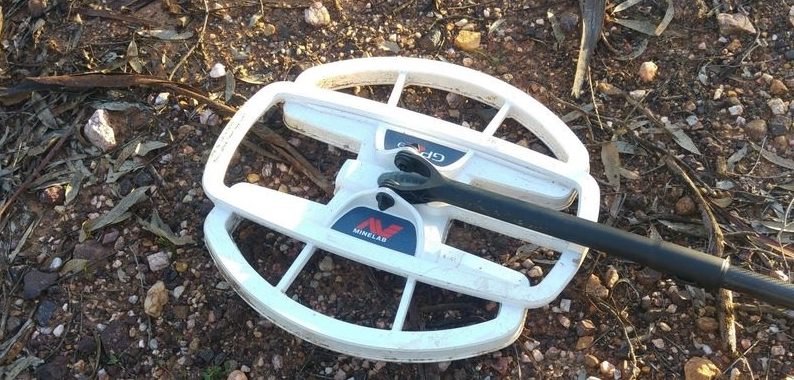
Designed for metal detectors using the ZVT method. Are installed in the amount of three pieces. The central one works for transmission, two external ones perform the functions of a receiver.
Coil shapes
- Round
They work with all types of ground vehicles except RF devices. Capture a small area. They are easy to work with on large sites.
- Elliptical
This shape allows you to "stretch" the field it creates and increase the area captured in one pass. Suitable for concentric views, but reduces the accuracy of target location.
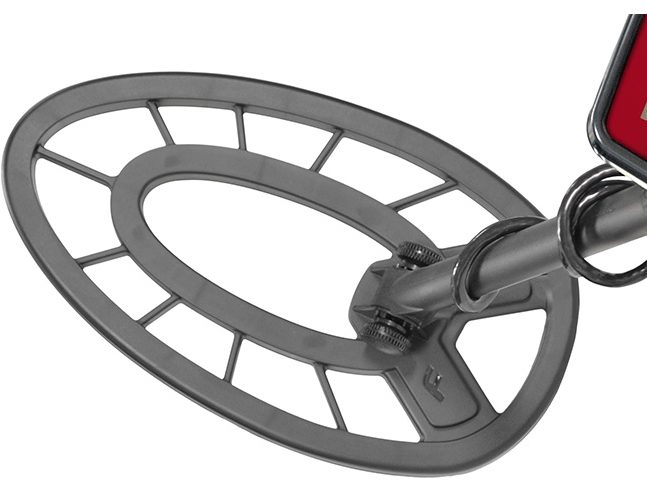
- Rectangular
Designed for downhole devices, with RF circuit. It is not used in other devices.
- Butterflies
In principle, this is the DD variant, somewhat modified, similar to the wings of butterflies.

How to choose a metal detector
Let's consider the main selection criteria, based on which you can choose a convenient and reliable device, with a set of all the necessary functions, at an affordable price.
Waterproof coils
Protected from moisture, they can be used in wet grass, shallow puddles, along the banks of water bodies.
Underwater detectors
These are special devices, which are full-size devices with a barbell, an armrest, an electronic control unit for a waterproof coil and headphones. In appearance, they differ little from ground ones and can be used as such. The immersion depth (a special characteristic of underwater vehicles) can reach 60 m.

The metal detection depth is small, about 30 cm. This should not be considered a disadvantage. It will be difficult to dig a meter-long hole under water. So, finding metal at the bottom, under a 30 cm layer of sand and silt, is a very good indicator. One of the best underwater vehicles - Minilab Excalibur II underwater. Suitable for freshwater and salt water diving. It can work as a conventional ground detector.
Devices for underwater search are also popular: Skiba Tektor, Kevar-150 Otter, etc. These are compact, waterproof detectors in a plastic case. When metal is detected, a sound and vibration signal is given, and a light indicator is triggered.
Rod size
It's about the length, i.e. distance from the coil to the armrest. The parameter varies from 120 to 145 cm. The instrument must be selected according to your height, so as not to walk bent over and not to get back pain. An excellent option would be to buy a metal detector with a telescopic rod that can be adjusted to your height.
The presence of an armrest
Not a superfluous detail. The load on the wrist is reduced. The structure is easy to operate and holds stably even with one hand.
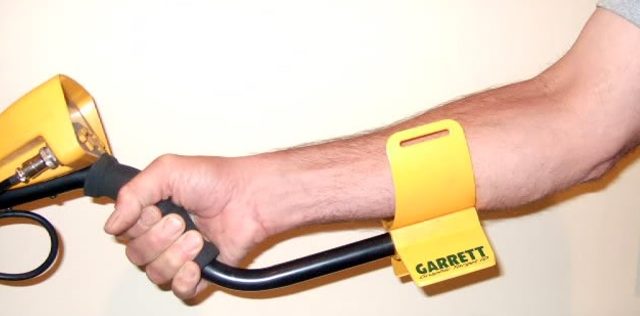
Speaker
It is not always convenient to use headphones, and it is unsafe in the city or near the highway. You may not hear the approaching car. A metal detector with a built-in speaker does not need headphones.
Headphone jack
Those who prefer to use headphones are better off choosing a model with a headset jack. There are few options: either the mini-qack 3.5 mm, which is popular for most audio devices, or a special connector for "native" headphones from the manufacturer.
Machine weight
Before buying a metal detector, it is advisable to find out how much it weighs in a fully equipped state.With all the same characteristics, it is better to give preference to a lighter device.
Coin detection depth
This is a measure of the effectiveness of the device. A coin is a fairly small object. The standard coils of most models detect such objects under a layer of earth from 20 to 40 cm, and large objects at a greater depth.
Identification by signal tone
An interesting feature common to most modern devices. When objects with low electrical conductivity are detected, the detector emits low-tone signals (bass). The better the conductivity of the object, the higher the tone of the signal.
Pin-Point
The metal detector gives a signal about the location of the coin within a radius of 30-40 cm. When the Pin-Point mode is on, the device will give a monotone signal exactly over the center of the sought object. Most companies - manufacturers of metal detectors produce small devices specifically for this purpose - pinpointers.
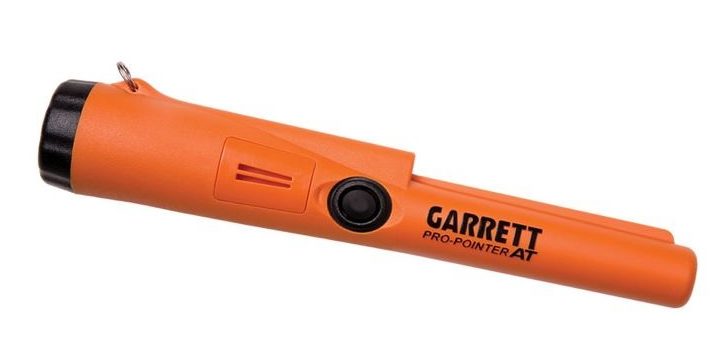
What else to pay attention to
Adjustable signal volume
The volume of the signal should be adjusted both in the speakers and in the headphones. During prospecting work, the signal should be clearly audible, and at the same time, it should not be too loud to create discomfort.
Sensitivity settings
There are no perfect search terms. To search at great depths, you will need maximum sensitivity, and if the soil is mineralized, it will only interfere. Adjusting the sensitivity when working in different conditions is an important function.
Batteries
The following types of batteries are used to supply devices with electricity:
- AA size batteries, disposable or rechargeable batteries. In different devices, there can be from 2 to 8 pieces.
- Crown. Just like AA batteries, there are disposable and rechargeable batteries, but more powerful.
- Own batteries. They have significant capacity and power. Supplied complete with the device. The most convenient option.
Top manufacturers
Experienced users will tell you which company the product is better to buy. Our review brings to the attention of readers a small list of manufacturers, the popularity of models of which is explained by the high build quality, the constant implementation of innovative developments and unique functionality.
- Bounty Hunter, USA. Its popular models are multifunctional, reliable and durable.
- Detech, Bulgaria. We specialize in the production of high quality metal detector coils.
- Fisher Research labs, USA, Texas. One of the leaders in this market.
- Minelab, Australia. World leader in the development of new methods for metal detection.
- Teknetics, USA. Part of First Texas, along with Bounty Hunter and Fisher Research labs.
- White's Electronics, USA. The company's products are very popular.
- Tesoro, USA. Also one of the best manufacturers of metal detectors.
The list of the best manufacturers can be supplemented by manufacturers from Europe, China, Japan. You can't list all of them. Which company is the best product to buy is up to you. Listen to the advice and recommendations of experienced users, study the description and operating instructions for the model you are interested in, find out how much a similar device costs. This will help avoid mistakes when choosing.
Where to buy a metal detector
The easiest way to make a purchase is from an online store. There are branded stores Garrett, Fisher, an online metal detector store MDRegion, Metal detectors-RU, etc. Visit Yandex Market. There you can find comprehensive information on this issue, and even order online any suitable model.
How to make a metal detector with your own hands
Buying a metal detector is not affordable for everyone. You can collect it at home on your own. It is not difficult to find circuits and a list of radio components on the network.
The most popular DIYers consider the device called PIRAT, where PI is the pulse detection method, or the device's operation scheme, RAT is the abbreviated name of the radioskot.ru site, where these schemes are published. All parts necessary for assembly can be purchased at any radio store.
Structures are made from scrap materials.The user will need some knowledge of radio engineering and experience in assembling circuits. On the pages of the site you can find recommendations for the manufacture of coils for different detection depths and sensitivity, and step-by-step instructions for assembling the device. Those who have tried to assemble the PIRATE with their own hands claim that this product will cost the user no more than 500 rubles of the Russian Federation.
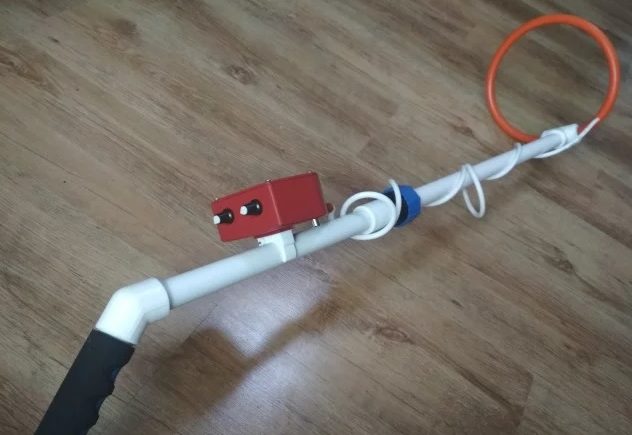
Rating of quality metal detectors
10.Bounty Hunter Tracker IV dirt
![]()
The low-frequency device is equipped with all the necessary functions. Signals can be picked up from the built-in speaker or through headphones. The detection depth is up to 80 cm. It is powered by two Krona batteries. According to buyers, an excellent combination of price and quality. A good device for beginners.
Advantages:
- stylish design;
- fits comfortably in the hand;
- easy to manage;
- does not require settings;
- inexpensive.
Disadvantages:
- weak discrimination typical for budget devices.
| Model name / brand name | Specifications | average price |
|---|---|---|
| Bounty Hunter Tracker IV / USA | Works according to VLF scheme. Equipped with built-in speaker, headphone jack, armrest. Power supply - two "Krona" batteries. Automatic ground balancing, discrimination, tonal identification functions. The sensitivity can be adjusted. The coil is round, waterproof. Working frequency 6.7 kHz. Weight 1.35. | 5699 rubles |
9.Minelab Go-Find 20

The Australian Minelab Go-Find 20 low-frequency ground metal detector has a functionality similar to the previous model. Lightweight plastic instrument with telescopic bar and adjustable armrest. Simple and intuitive menu of the electronic unit with battery charge indication and volume control of the built-in speaker.
Discrimination is poor. Precious metals and foil cannot be distinguished. Confidently identifies ferrous metals (bolts, etc.), does not confuse them with gold. The detection depth is up to 80 cm. The display screen contains icons representing ferrous metals, beer cans and tin lids, non-ferrous metals and precious metals. When a specific metal is detected, the signal tone changes and the corresponding icon flashes. Great tool for beginners.
Advantages:
- sufficiently large immersion depth;
- clear menu;
- affordable price.
Disadvantages:
- lack of clear discrimination.
| Model name / brand name | Specifications | average price |
|---|---|---|
| Minelab Go Find 20 / Australia | Works according to VFLEX scheme. Equipped with built-in speaker, headphone jack, armrest. Power supply - four AA batteries. Automatic ground balancing, discrimination, tonal identification functions. The sensitivity can be adjusted. The coil is waterproof. Working frequency 7.8 kHz. Weight 1.0 kg. | 6950 rubles |
8.Garrett ACE 150
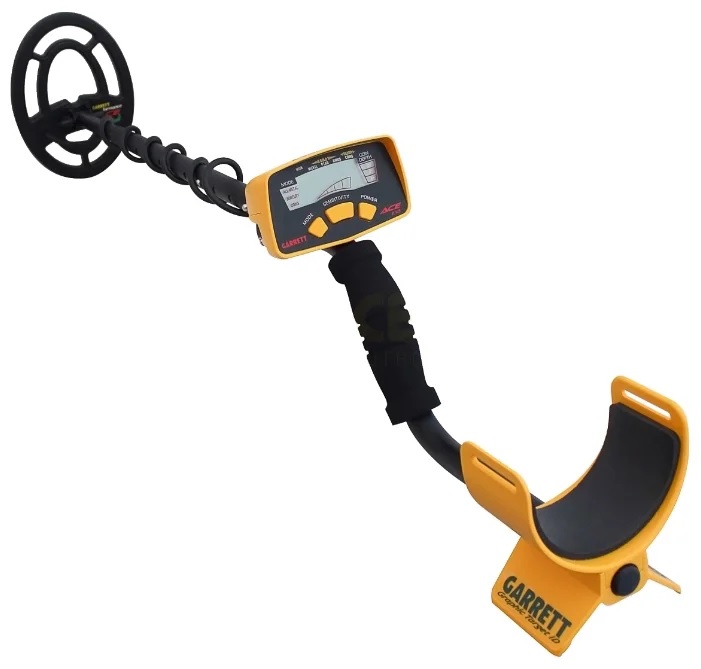
The junior device in the Garrett product line. Lightweight and easy to use, equipped with the necessary functionality. The remote is equipped with three buttons: power on, sensitivity adjustment, search program selection. On the right of the display is an indicator of the depth of object detection. The device is simple and straightforward, and therefore especially valuable for beginners.
Advantages:
- stylish design;
- Ease of controls;
- 40 hours of continuous work;
- two years warranty.
Disadvantages:
- no battery charge indicator;
- high price for novice users.
| Model name / brand name | Specifications | average price |
|---|---|---|
| Garrett ACE 150 / USA | Works according to VLF scheme. Equipped with built-in speaker, headphone jack, armrest. Power supply - four AA batteries. Automatic ground balancing, discrimination, tonal identification functions. The sensitivity can be adjusted. Elliptical coil, water resistant. Working frequency 6.5 kHz. | 11550 rubles |
7.Fisher F11 '' DD ground

A mid-range low frequency device for more advanced users. It differs from models for beginners by the presence of a pinpointer (button "PP"). Any of three programs can be selected in the display menu. Power from the Krona battery will last for three days of work.The battery level indicator will tell you when it's time to replace it.
Advantages:
- lightweight (1.04 kg);
- convenient;
- clear block interface;
- the presence of a pinpointer.
Disadvantages:
- few search programs.
| Model name / brand name | Specifications | average price |
|---|---|---|
| Fisher F11 11 '' DD / USA | Works according to VLF scheme. Equipped with built-in speaker, headphone jack, armrest. Power supply - one "Krona" battery. Automatic ground balancing, discrimination, tonal identification, pinpointer functions. The sensitivity can be adjusted. Elliptical coil, water resistant. Working frequency 7.69 kHz. The mass of the device is 1.04 kg. | 16250 rubles |
6.Bounty Hunter Land Ranger Pro
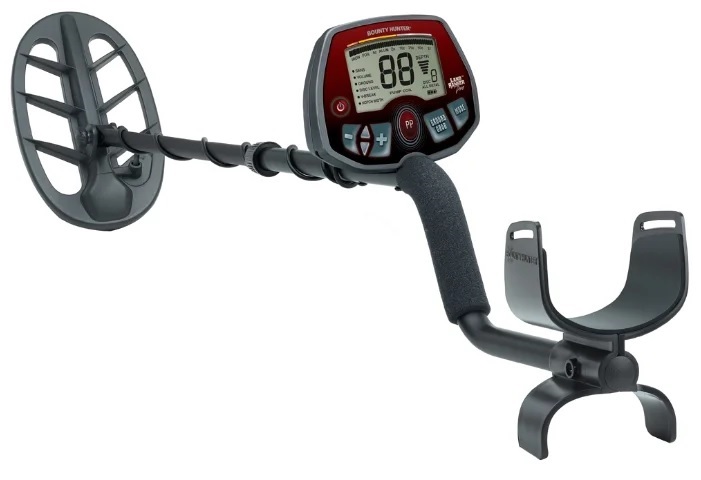
The Bounty lineup in our review is continued by the Hunter Land Ranger Pro low-frequency device. There are three search programs: coins, jewelry, and all metals. The display shows the detection depth, battery charge indicator "Krona", there is a button for turning on the pinpointer. Discrimination is extended compared to budget models. The device is lightweight, fits comfortably in the hand. The rod size is adjustable from 120 to 140 cm.
Advantages:
- extended discrimination;
- pinpointer;
- multi-tone tonal identification.
Disadvantages:
- not identified.
| Model name / brand name | Specifications | average price |
|---|---|---|
| Bounty Hunter Land Ranger Pro / USA | Works according to VLF scheme. Equipped with headphone jack, built-in speaker, armrest. Power supply - one "Krona" battery. Automatic ground balancing, discrimination, tonal identification functions. The sensitivity can be adjusted. Elliptical coil, water resistant. Working frequency 7.81 kHz. The weight of the device is 1.3 kg. | 18499 rubles |
5.Deteknix Quest Q40
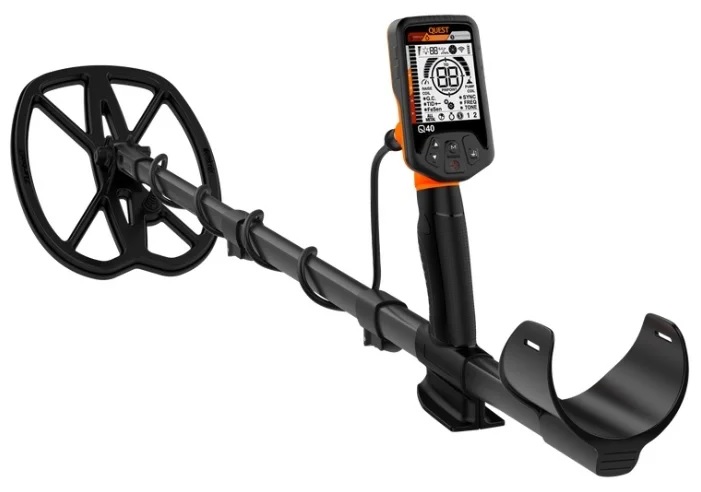
A solid American midrange instrument for beginners +, i.e. for no longer beginners. The design consists of a telescopic bar, an adjustable armrest and an electronic control module with a screen that can also be moved along the bar. On the control panel there are power buttons, mode adjustments, a program selection key.
The screen displays indicators of detection depth and sensitivity, battery charge, signal volume level. Powered by its own battery. The set includes a charger and headphones.
Advantages:
- solid assembly;
- moisture-proof version of the electronic unit;
- extended functionality.
Disadvantages:
- not identified.
| Model name / brand name | Specifications | average price |
|---|---|---|
| Deteknix Quest Q 40 / USA | Works according to VLF scheme. Equipped with built-in speaker, headphone jack, armrest. Powered by its own battery. The functions of automatic and manual ground balancing, discrimination, tonal identification are implemented. The sensitivity is adjustable. The device is equipped with a waterproof butterfly coil. Working frequency 13 kHz. The weight of the device is 1.35 kg. | 18499 rubles |
4.Fisher F 75 ground
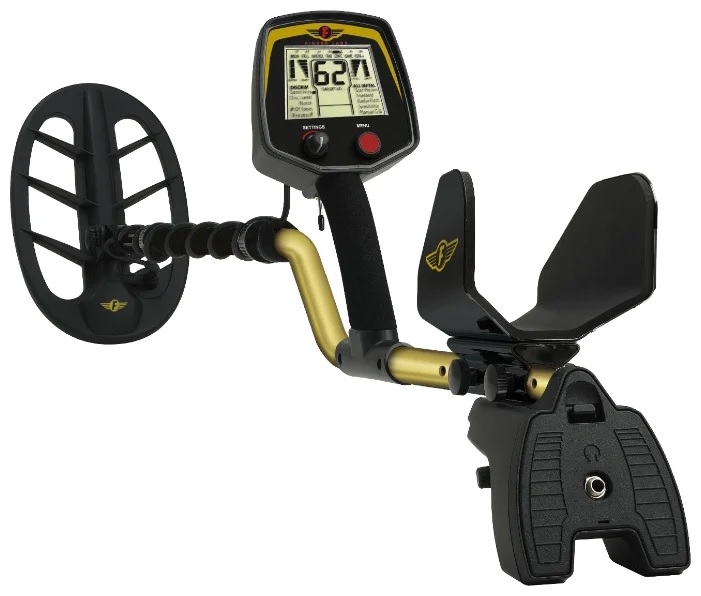
American midrange model for advanced search engines. Differs in original layout. In order to better balance the design, the battery compartment and built-in speaker are located at the upper end of the rod under the armrest. Turning on the device, adjusting the sound of the signal is made by a potentiometer located next to the armrest.
A toggle switch is installed directly under the control unit. Pressing it away from ourselves with the index finger, we turn on the ground balancing. Pulling the toggle switch towards you, turn on the pin-point mode. Users leave only positive reviews about it.
Advantages:
- excellent ergonomics;
- multifunctionality;
- noise cancellation program.
Disadvantages:
- only the price.
| Model name / brand name | Specifications | average price |
|---|---|---|
| Fisher F 75 / USA | Works according to VLF scheme. Equipped with built-in speaker, headphone jack, armrest. Powered by four AA batteries. The functions of automatic and manual ground balancing, discrimination, tonal identification are implemented. The sensitivity is adjustable.The device is equipped with an 11 "waterproof elliptical DD coil. Working frequency 13 kHz. Weight 1.6 kg. | 39,900 rubles |
3.Teknetics T2 LTD 11''DD + 5''DD
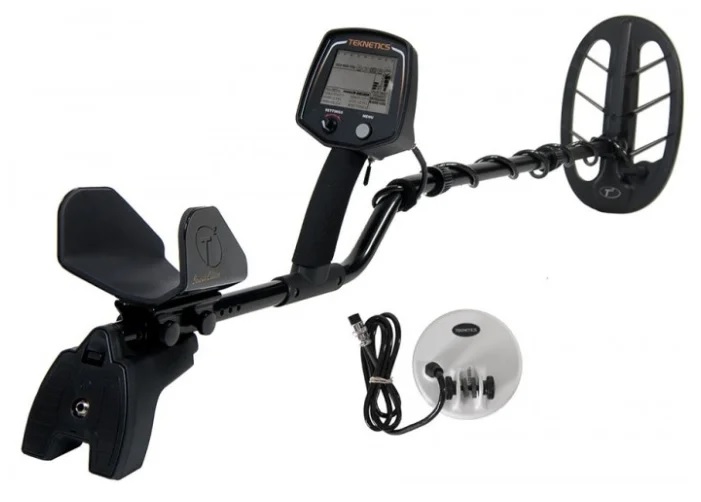
The three models for professional use are opened by the American Teknetics T2 LTD 11'DD + 5'DD detector. Structurally, it is no different from the Fisher F 75. The same ergonomics, a battery compartment with a speaker and a switch are located under the armrest. The display with control buttons, a toggle switch for turning on a pin-point is an exact copy of Fischer.
There are only two programs: all metals and discrimination mode. However, due to extensive discrimination, search capabilities are greatly enhanced. An excellent professional detector for any kind of search work.
Advantages:
- ergonomics;
- Ease of controls;
- widespread discrimination;
- nice design.
Disadvantages:
- high price.
| Model name / brand name | Specifications | average price |
|---|---|---|
| Teknetics T2 LTD 11''DD + 5''DD / USA | Works according to VLF scheme. Equipped with built-in speaker, headphone jack, armrest. Powered by four AA batteries. The functions of automatic and manual ground balancing, discrimination, tonal identification are implemented. The sensitivity is adjustable. The instrument is equipped with a waterproof 11 "DD coil and a 5" round coil. Working frequency 13 kHz. Weight 1.6 kg. | 39,900 rubles |
2. XP Metal Detector Deus
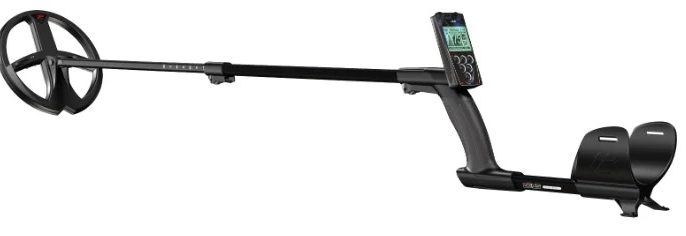
Legendary American multi-frequency metal detector. Equipped with a lot of settings for various modes, frequencies, detection depth and size of objects. Designed for professionals who have mastered all the intricacies of instrument search. Wireless. The operating frequency range is from 3.7 to 27.7 kHz, with the function of their shift, which significantly expands the search capabilities of the product.
The scales "will see" no deeper than 15-20 cm. This is not his strong point. Copper penny will be found not at a depth of 35-40 cm. Good result. It easily detects large metal objects at a depth of 1.5 m. Professionals who live in this fishery leave the best reviews about it.
Advantages:
- lightness and compactness;
- multifunctionality;
- versatility.
Disadvantages:
- very high price.
| Model name / brand name | Specifications | average price |
|---|---|---|
| XP Metal Detectors Deus / USA | Works according to VLF scheme. Equipped with built-in speaker, headphone jack, armrest. Powered by its own battery. The functions of automatic and manual ground balancing, discrimination, tonal identification are implemented. The sensitivity is adjustable. The device is equipped with a waterproof round coil. The device operates at low, medium and high frequencies with the possibility of their shift. Weight 0.96 kg. | 73,900 rubles |
1. Minelab Excalibur II underwater
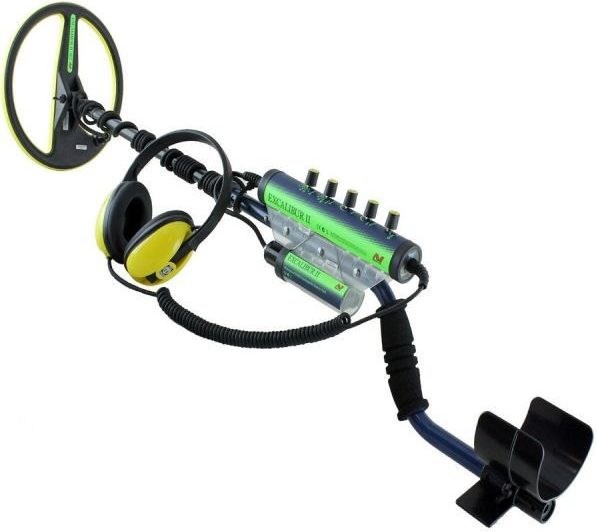
The first place in the review and the best customer reviews is won by the professional detector of the Australian company Minelab Excalibur II. By design - underwater, but can be used for ground expeditions, not inferior to their "land" brothers. Works simultaneously at 17 frequencies in the range from 1.5 to 25 kHz. With a mass of 2.5 kg, it is simply difficult to carry it through forests and fields, but its mass is not felt in the water.
Advantages:
- Russified management;
- high sensitivity to precious metals and non-ferrous metals;
- large immersion depth;
- versatility.
Disadvantages:
- unsuitable for searching for ferrous metals;
- high price.
| Model name / brand name | Specifications | average price |
|---|---|---|
| Minelab Excalibur II submarine / Australia | Equipped with a connector for waterproof headphones, armrest. No built-in speaker. Powered by eight AA batteries. The functions of automatic and manual ground balancing, discrimination, tonal identification are implemented. The sensitivity is adjustable. The device is equipped with a waterproof round DD coil. The device works immediately at seventeen frequencies in the range from 1.5 to 25 kilohertz. Weight 2.3 kg. | 78290 rubles |
Searching with instruments in fields, beaches, and underwater is exciting. Those who have tried to do it at least once will devote their whole life to it.It takes some time to become professionals. Therefore, picking up a detector once and for life is unlikely to work. You need to start with a simple, budget device with a set of necessary functions and simple settings. Over time, the understanding will come that the first device no longer satisfies and you need to purchase an advanced version with extensive capabilities to achieve tangible search results. We hope that our review will help you choose the right metal detectors and not make mistakes when choosing.













